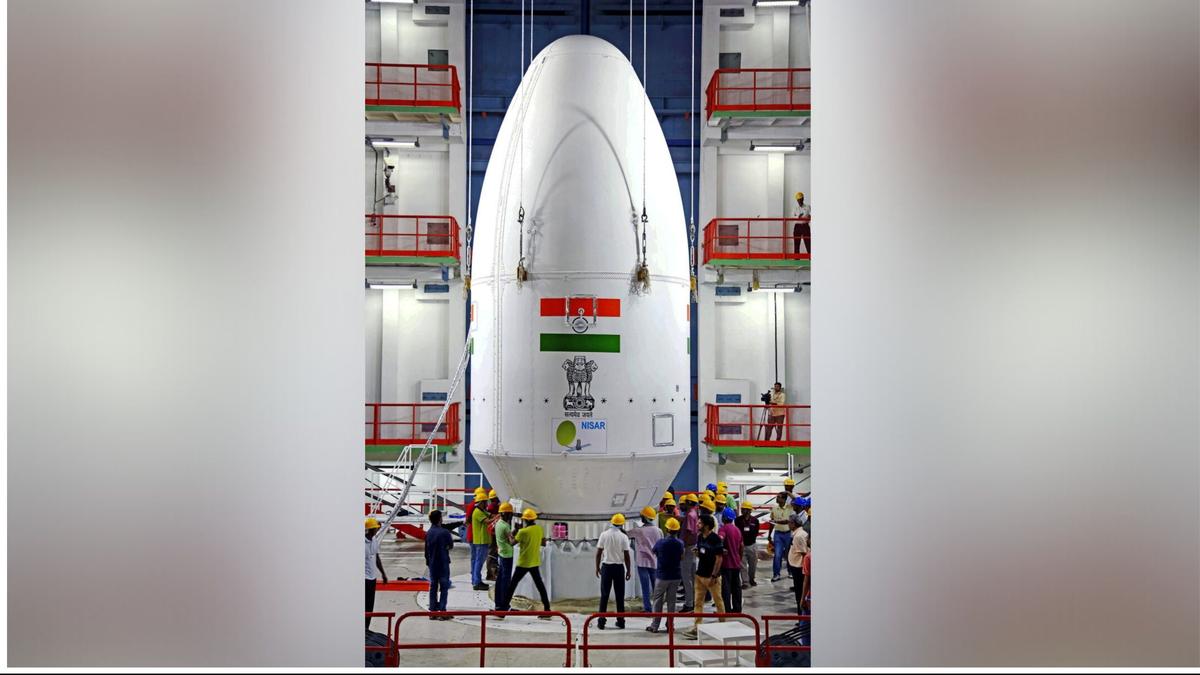Now Reading: ISRO Chief Confirms July 30 Launch for NASA-ISRO NISAR Satellite
-
01
ISRO Chief Confirms July 30 Launch for NASA-ISRO NISAR Satellite
ISRO Chief Confirms July 30 Launch for NASA-ISRO NISAR Satellite

Quick Summary
- NISAR Mission Launch: The NASA-ISRO Synthetic Aperture Radar (NISAR) satellite will launch on July 30, 2025, at 17:40 hrs from the Satish Dhawan Space Center in Sriharikota using India’s GSLV-F16 rocket.
- Unique Features: NISAR weighs 2,392 kg and is equipped with dual-frequency radar (NASA’s L-band and ISRO’s S-band). It uses SweepSAR technology for high-resolution, all-weather imaging of Earth’s surface with a swath of 242 km.
- Applications: Capable of detecting landslides, aiding disaster management, monitoring climate change, agriculture data collection, and observing Earth’s natural resources globally. Data generated will be freely accessible within one to two days or in near real-time during emergencies.
- Importance: Represents India-US collaboration in space science; expected to benefit scientific research worldwide and assist developing countries with critical data for climate resiliency and sustainable development planning.
- Technical Milestone: marks the first use of GSLV rocket to place a satellite into sun-synchronous polar orbit by ISRO.
- Ministerial Statements:
– Union Science Minister Jitendra Singh emphasized the mission as symbolic of global cooperation in science between two democracies.
– PM Modi’s vision highlighted that such missions elevate India as a global contributor (“Vishwa Bandhu”).
– Cost exceeded $1.5 billion; development spanned over a decade.
Indian Opinion Analysis
The NISAR mission is an illustrative example of Indo-US space cooperation fostering technological innovation with potential widespread impacts beyond just scientific inquiry-into practical domains like disaster mitigation and climate resilience planning. By leveraging unique dual-radar imaging capabilities alongside free data democratization policies, this initiative stands out as particularly impactful for countries lacking sophisticated Earth observation resources.
From India’s perspective,launching NISAR via an indigenous GSLV system reflects growing confidence in its aerospace technologies while together advancing international collaborations such as those with NASA-a critical marker toward achieving Prime Minister Modi’s vision of being a “global partner.” Moreover, the implications for domestic infrastructure are ample; extensive Earth observation could strengthen policymaking across agriculture management and environmental conservation while contributing to sustainable economic strategies long-term.For read more on this topic here.
























